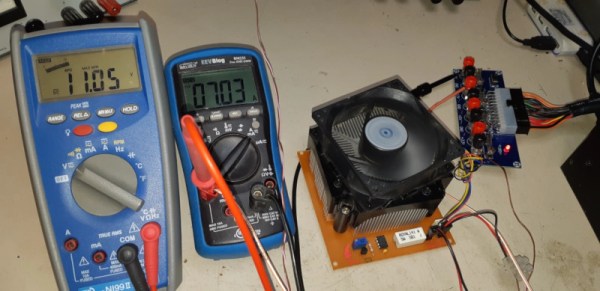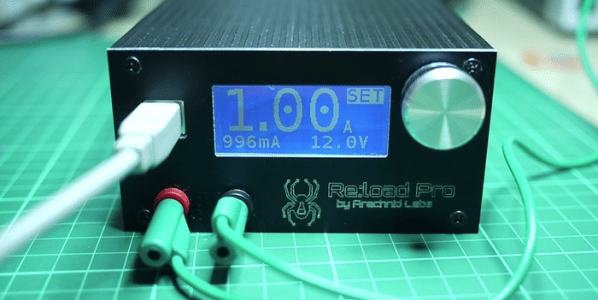When it comes to testing power supplies, it’s useful to have a dummy load to put the gear through its paces. While it’s possible to just use some old heating elements or other big resistors, an active load can provide more control over the process. [Charles Ouweland] found himself in need of just such a piece of gear, and decided to build his own.
Commercial units often pack in a raft of features, operating in different modes from constant resistance, constant power, and constant current. For [Charles]’s needs, just constant current would be fine, and thus the design progressed around this constraint.
The IRFP250 MOSFET specified in the build can dissipate up to 190W, but as it heats up, this is reduced. In this design, cooled by a heatsink and PC fan, [Charles] estimates 120W continous output is a safe limit. It’s combined with an LM358 op-amp and TL431A reference voltage source to act as a current sink, controllable between 0 and 10 amps.
We’re sure that the new hardware makes testing power supplies a cinch for [Charles], and it’s always good to have a strong understanding of the workings of your own test gear. We’ve seen open-source designs in this space, too!














